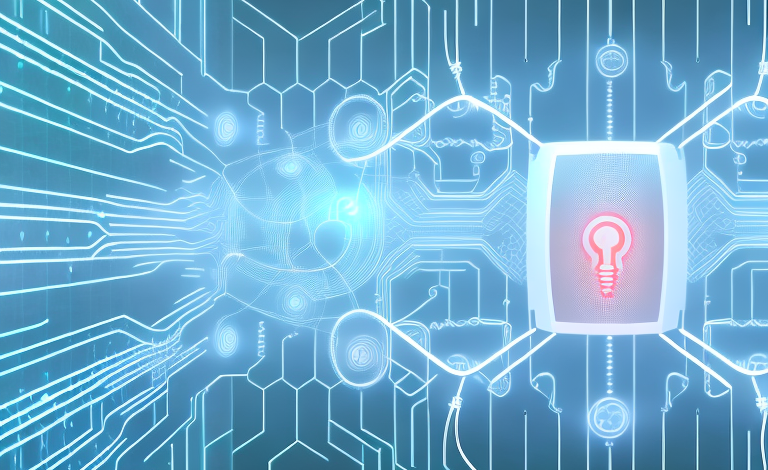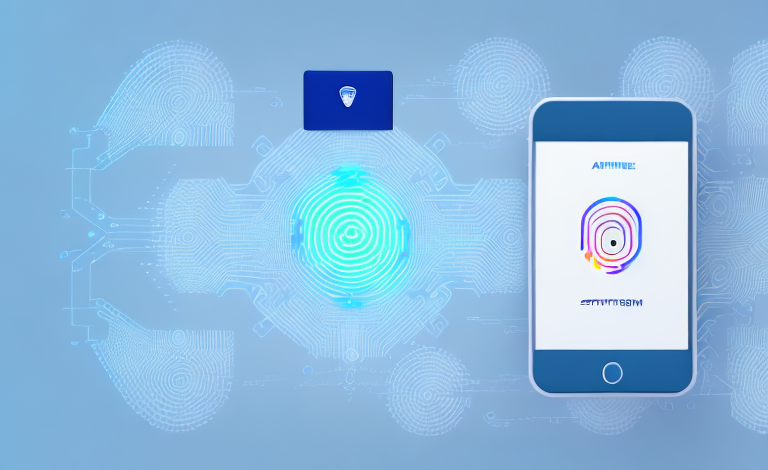Biometric security uses unique physical traits to identify individuals, such as fingerprints, facial recognition, and iris scans. While these systems offer several benefits over traditional security methods, they are not without their limitations. In this article, we will explore the advantages and disadvantages of biometric security and discuss the two main drawbacks of using this technology.
Understanding the basics of biometric security
Biometric security is a technology that uses unique physical characteristics to identify individuals. These characteristics can include fingerprints, facial recognition, iris scans, voice recognition, and even DNA. Biometric security is becoming increasingly popular because it is difficult to forge and offers a higher level of security than traditional methods such as passwords or PINs.
One of the main advantages of biometric security is that it eliminates the need for individuals to remember passwords or carry identification cards. This can save time and reduce the risk of identity theft. Additionally, biometric security can be used in a variety of settings, including airports, banks, and government buildings, to enhance security and prevent unauthorized access.
However, there are also some concerns about the use of biometric security. One issue is the potential for false positives or false negatives, which can occur when the system incorrectly identifies or fails to identify an individual. Another concern is the privacy implications of collecting and storing biometric data, which could be used for purposes beyond security. As with any technology, it is important to weigh the benefits and risks before implementing biometric security measures.
Biometric security vs traditional security methods
Biometric security is more secure and accurate than traditional security methods. Biometric systems cannot be easily hacked or stolen like passwords can be. They are also more convenient as the user does not have to remember a password or carry a key card, and they do not have to worry about losing them.
Another advantage of biometric security is that it provides a unique identification for each individual. This means that it is virtually impossible for someone to impersonate another person, as the biometric data is unique to each individual. This is particularly important in high-security environments such as government buildings or financial institutions.
However, there are also some drawbacks to biometric security. One of the main concerns is privacy. Biometric data is highly personal and sensitive, and there is a risk that it could be misused or stolen. There are also concerns about the accuracy of biometric systems, as they may not work properly for certain individuals, such as those with disabilities or those who have undergone cosmetic surgery.
The importance of biometric security in today’s world
In today’s world, the risk of identity theft and hacking is higher than ever. Biometric security offers a secure and reliable way of protecting sensitive information, such as medical records, financial information, and national security information. This technology is also becoming increasingly important in the workplace, where biometric security systems are used to restrict access to sensitive areas and monitor employee attendance.
One of the key advantages of biometric security is that it is difficult to replicate or forge. Unlike traditional security measures such as passwords or ID cards, biometric data such as fingerprints or facial recognition cannot be easily duplicated. This makes it a highly effective way of preventing unauthorized access to sensitive information or areas.
Another benefit of biometric security is that it can be used to enhance customer experience. For example, some banks are now using biometric authentication to allow customers to access their accounts without the need for a password. This not only makes the process more convenient for customers, but it also reduces the risk of fraud and identity theft.
The limitations of biometric technology in terms of accuracy and reliability
Biometric security systems are not perfect and can have accuracy and reliability limitations. For example, facial recognition systems are less accurate if the subject is wearing glasses, hats, or if the lighting conditions are poor. Fingerprint recognition systems can also be less accurate if the user’s fingers are dirty or wet. The reliability of biometric systems can also be affected by changes in the user’s physical characteristics, such as weight gain or loss, aging, or injury.
Another limitation of biometric technology is the potential for false positives and false negatives. False positives occur when the system incorrectly identifies someone as an authorized user, while false negatives occur when the system fails to recognize an authorized user. This can be particularly problematic in high-security environments where access must be strictly controlled. Additionally, there are concerns about the security of biometric data, as it can be vulnerable to hacking or theft. As with any security system, it is important to weigh the benefits and limitations of biometric technology before implementing it.
Privacy concerns associated with collecting biometric data
Collecting biometric data can raise significant privacy concerns. Biometric data is personal information that can be used to identify an individual. If this data is stolen or exposed, it can be used for malicious purposes such as identity theft. There is also a risk that biometric data collected by companies could be sold or shared with third parties without the user’s consent.
Another concern is the potential for biometric data to be used for discriminatory purposes. For example, facial recognition technology has been shown to have higher error rates for people with darker skin tones, which could lead to unfair treatment or exclusion. Additionally, the use of biometric data in surveillance systems raises questions about government overreach and invasion of privacy.
It is important for companies and governments to implement strong security measures and transparent policies when collecting and using biometric data. Users should also be informed about how their data will be used and have the ability to opt-out if they choose. As biometric technology continues to advance and become more widespread, it is crucial to address these privacy concerns to ensure that individuals’ rights are protected.
The risk of hacking and data breaches in biometric systems
While biometric security systems are more secure than traditional methods, they are not immune to hacking and data breaches. If a company’s biometric data is stolen, it can be used to impersonate users, access restricted areas, or commit other types of fraud. Furthermore, biometric data is often stored on centralized servers, making it vulnerable to cyber-attacks.
One of the biggest challenges in securing biometric data is that it cannot be changed like a password or a PIN. Once a person’s biometric data is compromised, it cannot be reset or replaced. This means that the consequences of a data breach in a biometric system can be long-lasting and difficult to mitigate.
Another concern with biometric systems is the potential for false positives or false negatives. False positives occur when the system incorrectly identifies someone as a legitimate user, while false negatives occur when the system fails to recognize a legitimate user. Both scenarios can lead to security breaches or inconvenience for users, and it is important for companies to regularly test and update their biometric systems to minimize these errors.
Legal and ethical considerations surrounding biometric security
There are legal and ethical considerations surrounding the use of biometric security systems. For example, some countries have laws regarding the collection and use of biometric data. There are also ethical concerns about using this technology to monitor employees or track individuals without their knowledge or consent.
Furthermore, there are concerns about the accuracy and reliability of biometric systems. False positives and false negatives can occur, which can lead to individuals being denied access or falsely accused of wrongdoing. Additionally, there are concerns about the potential for biometric data to be hacked or stolen, which could lead to identity theft or other security breaches. It is important for organizations to carefully consider these legal and ethical considerations before implementing biometric security systems.
Alternatives to biometric security for sensitive information
While biometric security offers a high level of security, there are some alternative methods for protecting sensitive information. One alternative is two-factor authentication, which requires a password or PIN in addition to a physical key. Another alternative is to use encryption and multiple layers of security to protect sensitive information.
Another alternative to biometric security is the use of virtual private networks (VPNs). VPNs create a secure, encrypted connection between a user’s device and a remote server, making it difficult for hackers to intercept sensitive information. Additionally, some organizations may choose to implement strict access controls and permissions, limiting the number of individuals who have access to sensitive information. While biometric security may be a convenient and effective option for some, it is important to consider and explore alternative methods to ensure the highest level of protection for sensitive information.
Improving the accuracy and reliability of biometric systems
There are several ways to improve the accuracy and reliability of biometric systems. For example, using multiple biometric factors, such as facial recognition and fingerprint scanning, can increase accuracy. Training users on best practices, such as keeping fingers dry and clean, can also improve the reliability of fingerprint scanning.
The future of biometric security: advancements and challenges
The future of biometric security looks promising, with advancements such as AI-powered facial recognition and 3D biometric scans. However, there are still challenges to overcome, such as increasing accuracy, addressing privacy concerns, and preventing cyber-attacks.
Best practices for implementing and managing biometric security systems
Implementing and managing biometric security systems requires careful planning and implementation. Best practices include conducting a risk assessment, choosing the right technology, training users on best practices, and regularly testing and updating the system.
Real-world examples of successful (and unsuccessful) implementation of biometric security
There are many real-world examples of successful biometric security implementations. For example, the Aadhaar system in India has used biometric data to identify citizens and provide secure access to government services. However, there have also been some high-profile failures, such as the hacking of the OPM biometric database in the US.
Cost-benefit analysis: is biometric security worth the investment?
When deciding whether to invest in biometric security, a cost-benefit analysis should be conducted. Biometric systems can be more expensive to implement than traditional methods, but the increased security and convenience can outweigh the cost.
How to educate employees on using and maintaining a secure biometric system
Training and education are crucial for the successful implementation of biometric security systems. Employees should be trained on best practices for using and maintaining the system, such as keeping their fingers clean and dry for fingerprint scanning. It is also important to educate employees on the privacy implications of collecting biometric data and how to protect it from cyber threats.
In conclusion, while biometric security offers several benefits over traditional security methods, it is not without its limitations. The two main disadvantages or limitations of using biometric security are the accuracy and reliability limitations of the technology and the privacy concerns associated with collecting biometric data. To overcome these limitations, best practices such as implementing multiple biometric factors, training users on best practices, and regularly updating and testing the system should be followed.



